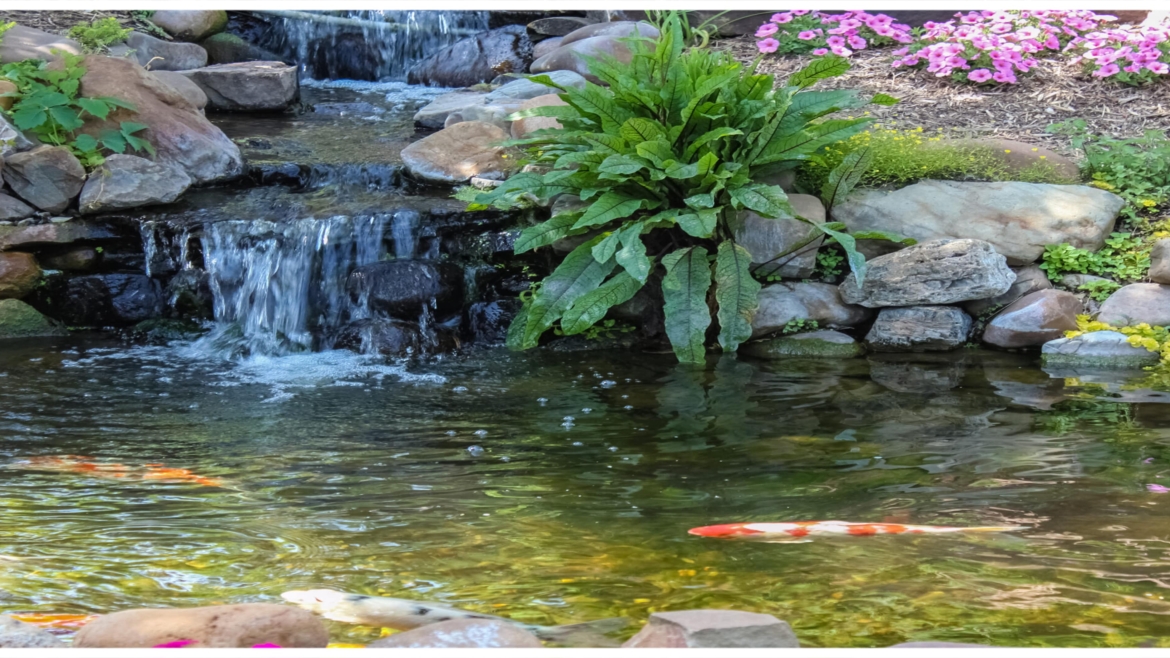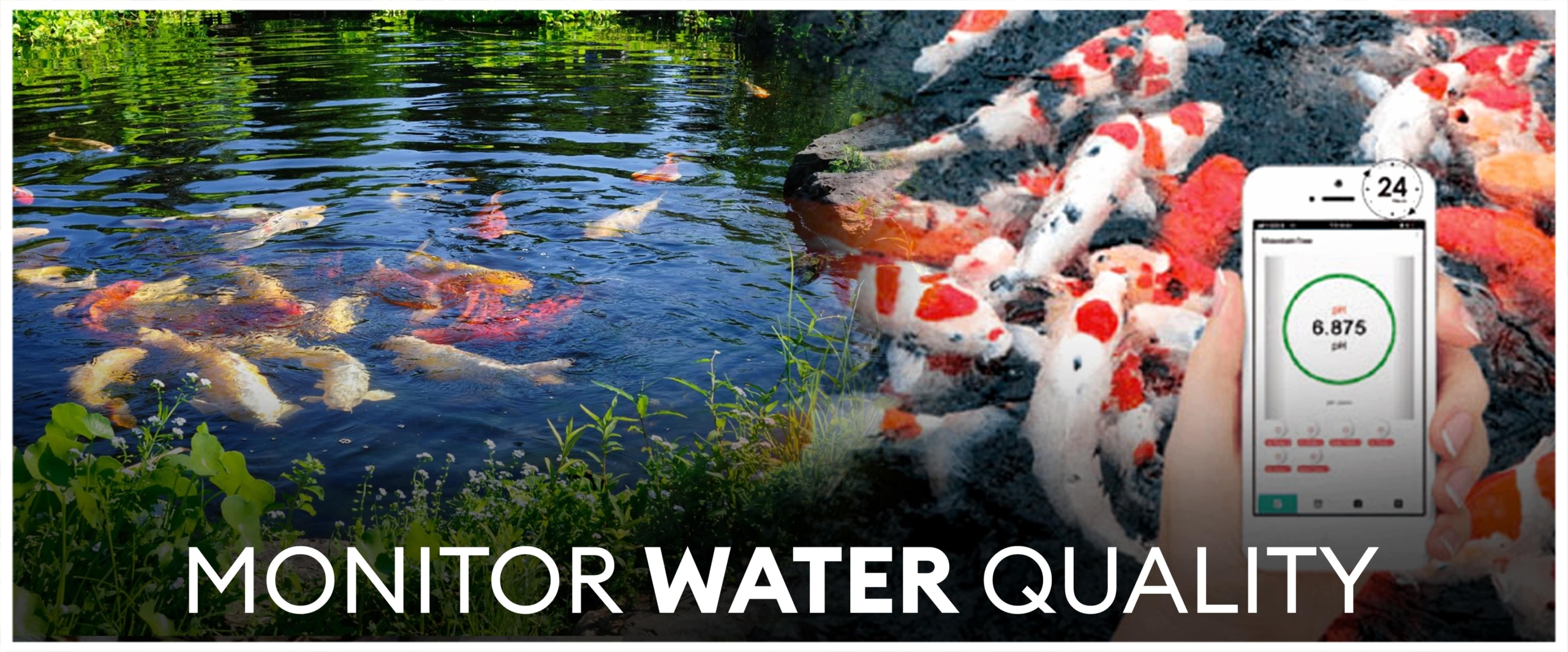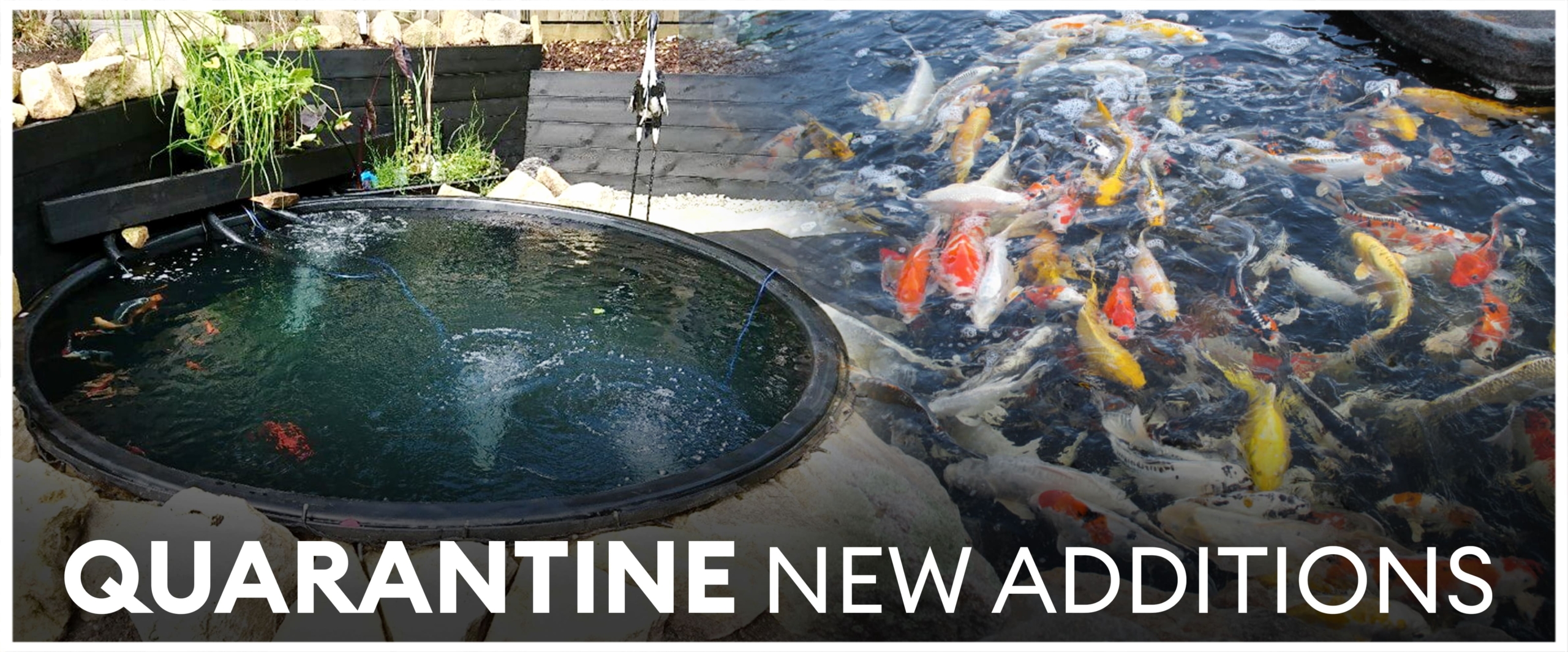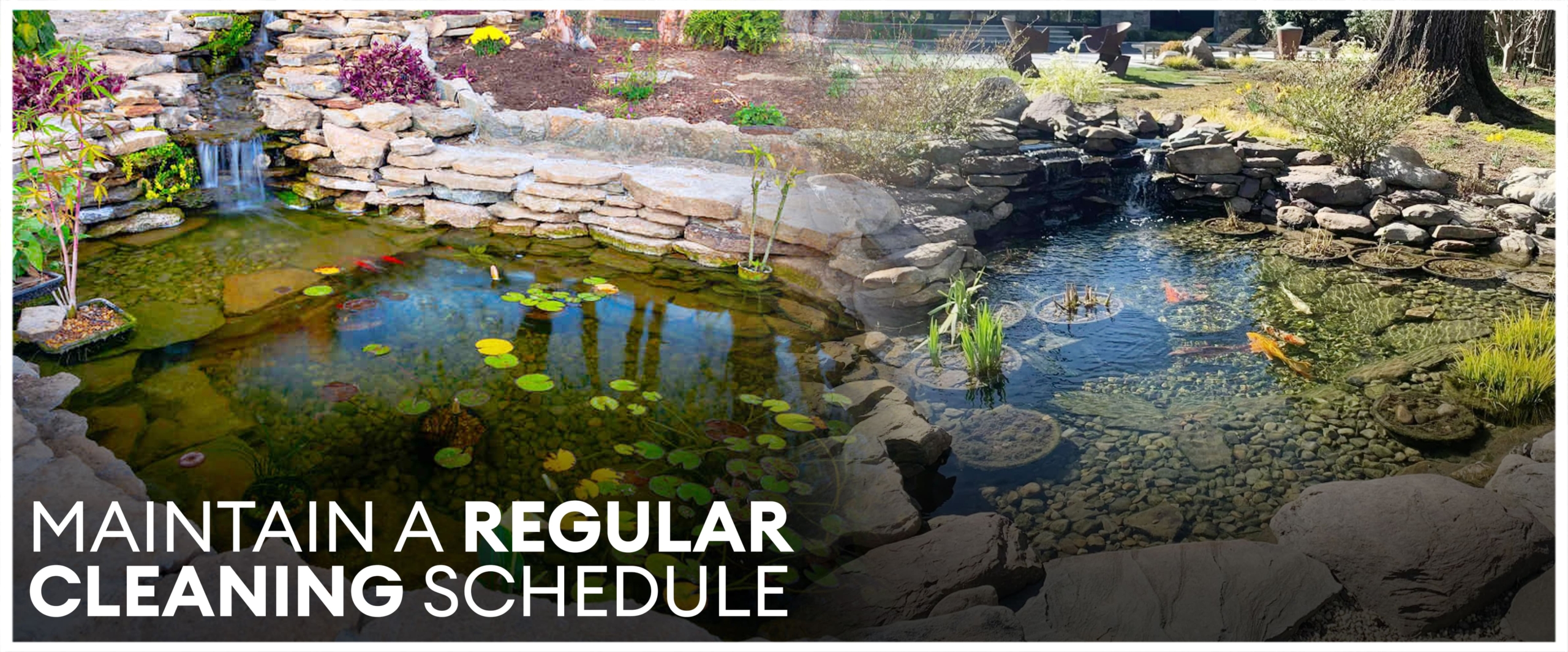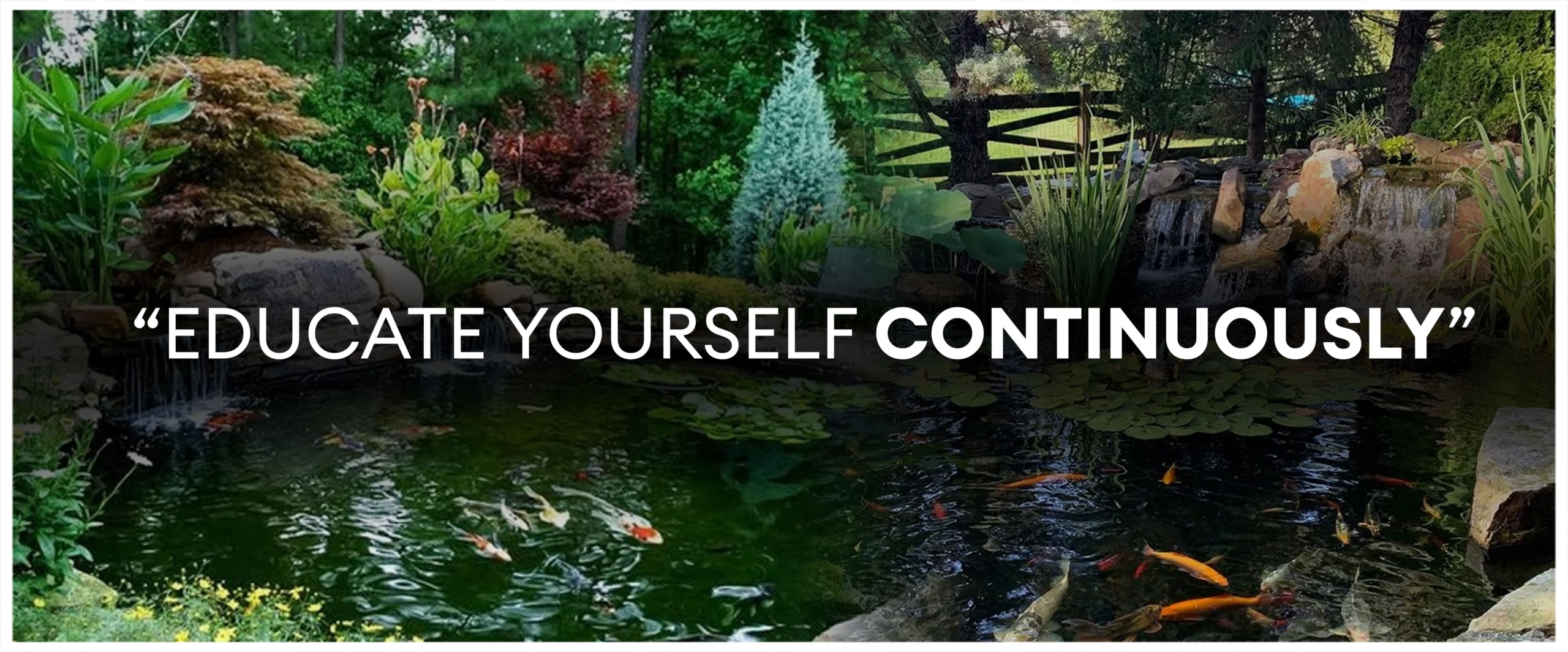As the cool autumn air comes and the leaves change colors, we start thinking about getting Your Koi Pond Ready For Spring. Like our gardens, these water sanctuaries need some care to survive the colder months and become healthy and lively in the spring.
Imagine it as putting your koi fish to bed for a long winter sleep. Taking care of your pond before winter ensures the fish have a cozy place to sleep during the cold days. They will be healthy and energetic when the weather gets warmer again.
Let’s get your rake and a warm drink and learn easy ways to prepare your koi pond for winter.
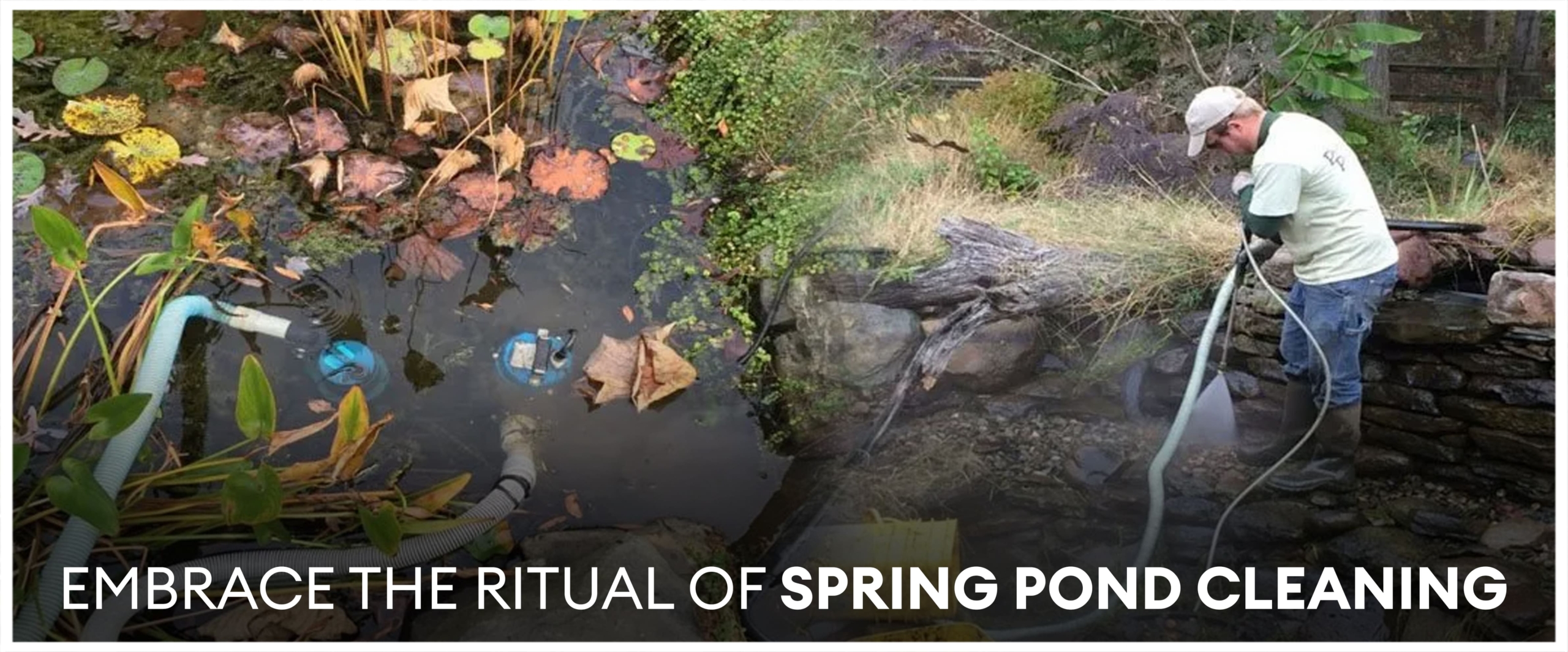 Embrace the Ritual of Spring Pond Cleaning:
Embrace the Ritual of Spring Pond Cleaning:
Cleaning a pond in spring is not just about getting rid of dirt and waste; it’s a particular tradition that represents starting fresh and feeling refreshed.
This is a chance to spend time in nature and make it a peaceful spot for your koi to be healthy and happy. Here is everything you need to know about getting your koi pond ready for the coming days.
Assess the Situation:
- Before diving into the cleaning process,
- Take a moment to observe the condition of your koi pond.
- Remove any winter coverings and inspect the water quality.
- Look for signs of debris accumulation, algae growth, and any damage that may have occurred during the colder months.
Gather Your Pond-Cleaning Goodies:
- A good pond vacuum or skimmer net is like a dustpan for underwater. It can scoop leaves, dirt, and pesky mosquito larvae from the water.
- Use a soft brush to gently clean the walls of the pond and remove algae to keep it clean and clear.
- A water testing kit is like a health check for your koi fish. This helpful kit helps you look at the water quality, check how acidic the water is, and determine if there are enough nutrients.
- Use a de-chlorinator when adding tap water to your pond. Tap water can be harmful to koi fish.
Drain and Clean:
Start by draining some pond water to a safe level for your koi. Use the pond vacuum or skimmer net to remove leaves and dirt that may have settled at the bottom. Be gentle to avoid disturbing your fish.
Next, carefully scrub the pond walls and other hard surfaces to remove algae buildup and dirt. Please pay special attention to areas with stagnant water, as they are prone to algae growth and can compromise water quality.
Trim and Prune:
Spring is the perfect time to trim overhanging branches and prune surrounding vegetation. This not only improves the aesthetics of your pond but also prevents debris from falling into the water and creating a mess.
Check Equipment:
Check your pond equipment, including pumps, filters, and aerators, to ensure they function optimally. Clean or replace filters as much as needed to maintain water clarity and quality. Make any necessary repairs to prevent leaks or malfunctions that could disrupt your pond ecosystem.
Refill and Treat:
Once you’ve completed the cleaning process, refill the pond with fresh water. Add a de-chlorinator to neutralize chlorine and chloramines in tap water, making it safe for your koi.
Monitor Water Quality:
Regularly monitor water quality, such as pH, ammonia, and nitrates, to ensure a healthy environment for your koi. Adjust water chemistry as needed and perform partial water changes to maintain optimal conditions.
Enhance Aesthetic Appeal:
Adding new water plants or decorations can make your koi pond look even more admirable. Choose plants that cover the water, make oxygen, and give your fish places to hide.
You can use rocks, wood, or statues to make the area look pretty and provide a safe home for animals.
Introduce Beneficial Bacteria:
Adding beneficial bacteria will jumpstart the biological filtration into the pond. These microbes revert organic matter into harmless organics, thus minimizing the chance of ammonia peaks and enhancing nature’s balance.
Quarantine New Additions:
If you plan to introduce new koi to your pond, it’s crucial to quarantine them first. This precautionary measure helps prevent the spreading of potential diseases and parasites to your existing fish.
A dedicated quarantine tank lets you observe and treat new additions before integrating them into the main pond.
Foster Plant Life:
Koi are also responsible for creating a healthy and safe environment due to aquatic plants; thus, aquatic base mats are essential in ensuring that water is always available. Apart from serving as beautifiers, it notes that plants also serve as natural filters, accumulating extra nutrients that may cause algae blooms.
In addition, apply a range of plants like water lilies and lotuses on the surface area alongside subsurface oxygenators. They improve water quality, help shade it from sunshine, and shelter it.
Address Algae Issues:
Koi ponds are known for the problem of abundant algal growth, especially in spring when daylight becomes abundant. Solar radiation is significant, and phosphorus content and other nutrients increase.
It is accurate as much algae at an average level and a higher rate contributes to a good environment; however, extreme growth rapidly impairs water quality.
Implement preventive measures such as shade-providing plants and UV clarifiers to control algae and maintain water clarity.
Consider a Pond Cleaner:
Consider using a specialized pond cleaner for stubborn debris. These products contain natural bacteria that break down organic matter, reducing maintenance efforts. Choose a pond cleaner suitable for koi ponds and follow the instructions for best results.
Maintain a Regular Cleaning Schedule:
Maintain a clear pond by setting a cleaning schedule for removing debris and other debris.
Conduct surveys on fallen leaves, untouched food items, and other waste materials.
Maintenance will add to the beauty of your pond and maintain the equilibrium and health of your koi community.
The Joy of a Well-Maintained Koi Pond:
While preparing your koi pond for spring can be seen as just another chore, it is an investment in the well-being of your beloved koi and the beauty of your outdoor space.
Accept the integration of a harmonious balance in water parameters, development of plant life, and incorporation of seasonal modifications to establish a flourishing ecosystem.
Install Fish Shelters:
Fish shelters like caves and floating islands provide places of safety for your koi to hide and protect from predators. These additions don’t only fulfill a practical function, but they add to the natural beauty of your pond.
Embrace Natural Balance:
Ensure a balanced ecosystem by encouraging natural predators of common pond pests. Consider introducing beneficial insects, like dragonflies, which can help control mosquitoes.
Moreover, maintaining a population of snails can assist in controlling algae growth. Embracing natural balance minimizes the need for chemical interventions and fosters a self-sustaining pond environment.
Educate Yourself Continuously:
Taking care of a koi pond requires ongoing attention, and staying informed to do it well is essential. Keep learning new ways to care for your pond, like new tools and tricks.
Go to workshops, read books, and join online groups to share ideas and keep up with the latest ways to care for koi ponds.
Enjoy the Fruits of Your Labor:
After you clean and freshen up your koi pond, sit down, unwind, and enjoy the calm and pretty water area. Look at your pretty koi fish swimming nicely in the clean water; happy to have more space.
Seek Professional Advice:
Expert opinion is always going to improve the well-being of your pond. Midwest Pond Features And Landscape are experts in ponds, have a marvelous track record for pond maintenance and are always available for offering professional advice.
Joining online groups or local clubs can help you meet people who know much about caring for koi fish and are happy to share what they learn.
Ready to elevate your koi pond experience? Trust Midwest Pond Features And Landscape for expert spring cleaning and maintenance.
Frequently Asked Questions (FAQs):
How often should I clean my koi pond?
It depends on its nature, size, the number of fish it contains, and the environment around it.
Mostly, thoroughly clean the home once a year during the spring season.
In the case of a koi pond, you need to keep cleaning and checking the water regularly. Conducting such monthly activities to keep your pond functional would be good.
Can I use tap water to fill my koi pond?
Using tap water for your koi pond is okay, but water must treated before being added to the pound. Also, by testing its acidity and other parameters, remember to check the tap water to see if it suits your koi.
How do I prevent algae overgrowth in my koi pond?
Algae growing too much is a problem for people who have ponds. To stop too much algae, use different methods: planting trees and big plants to shade and block some sunlight. Use UV clarifiers to halt too much algae from growing.
Keep the right amount of good bacteria to stop algae from getting too many nutrients. Regular cleaning, enough air, and keeping an eye on the nutrients in the water can also help stop problems with algae.
What is the ideal water temperature for koi?
Koi fish can live in hot or cold water, but the water’s temperature can change how they act and eat. When the water gets hotter, aim to keep it between 50°F to 75°F (10°C to 24°C).
You can start eating more protein to match the temperature change as it gets warmer. Checking the water temperature is essential for deciding when to feed your koi and ensuring they stay healthy.
Wrapping It Up:
As you start to clean your pond for spring, think about these tips to improve your koi pond. These strategies go beyond the basics to ensure your pond stays clean and your koi fish are healthy and happy for longer.
Remember, a koi pond that is taken care of is a lively environment that brings happiness to your outdoor area. Using new methods and paying attention to your pond needs, you can make an excellent place for your koi fish to grow and enjoy a beautiful water garden.

